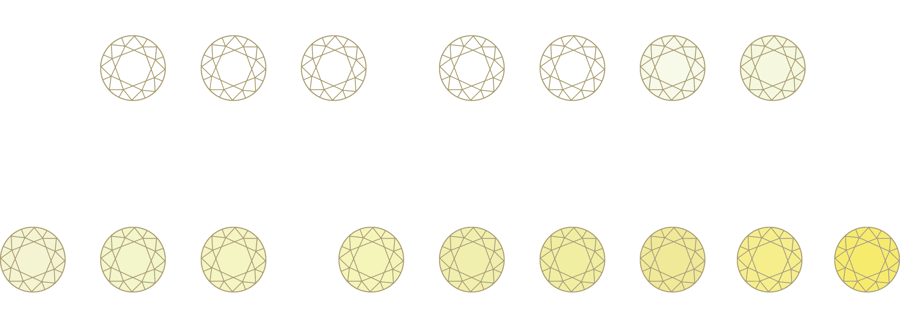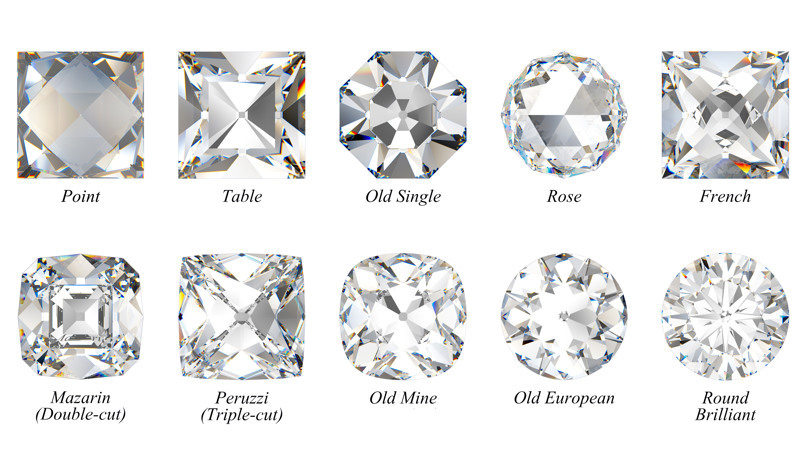The 4C's of Diamond Valuation
A diamond is the hardest natural material. It is formed deep inside the earth when carbon atoms are pressed together under high temperature and pressure, resulting in the formation of a crystal. These diamonds are then brought to the surface through volcanic eruptions or earthquakes.
Not all diamonds are valuable. In fact, around 95% of natural diamonds are of poor quality and are unsuitable for jewelry. These diamonds are primarily used for industrial purposes or for polishing the diamonds that do have good quality.
When a diamond is found, it is first polished by a professional diamond polisher. Based on their experience, the polisher has a general idea of the diamond's potential and makes an initial estimation of its carat, color, clarity, and cut. However, the final value of the diamond is not yet decided. The polished diamond is then sent to an independent certification authority for a closer examination.
The certification authority measures and weighs the diamond, examines its color to determine its position on the diamond color scale, and investigates any inclusions using a microscope. Multiple experts review the diamond to minimize any potential errors. After the examination, the certification authority determines the final value of the diamond. It can now be sold and used in jewelry.
At Royal Coster Diamonds we have different tours to give you more information about Diamond Valuation.
The 1st C: Carat
The weight of a diamond is expressed in carats. Carat is a unit of weight used for gemstones. The term "carat" comes from the French word "Carob," which refers to the seeds of the carob tree. These seeds have a consistent and universal weight, with an average of 0.2 grams per seed.
To make it easier for customers and dealers, carats are divided into points. One carat is equivalent to 100 points, or 0.2 grams. For example, half a carat is 50 points and weighs 0.1 grams. This point system simplifies the measurement of weight for both sellers and buyers. The density of a diamond, also known as its specific weight, is 3.2 grams per square centimeter.
The size of a diamond directly influences its price. Larger diamonds are rarer and therefore more valuable. Diamonds with a weight of half a carat (50 points) are the most found, while diamonds weighing over 0.5 carats are considered rarer. Diamonds with a weight of more than two carats are extremely rare, leading to a faster rise in price as the size of the diamond increases.
The 2nd C: Color
The color of a diamond is determined using verification stones, which come in various colors and gradations. Generally, diamonds with less color are more valuable. The color of a diamond is graded based on a scale that ranges from pure to impure, with pure diamonds being closer to the start of the alphabet.

Diamonds are not limited to colorless or yellowish shades. They can be found in a wide range of colors, each with its own unique cause. Green diamonds have been exposed to radioactive rays and higher temperatures during their formation. Red, pink, orange, and brown diamonds have experienced damage to their crystal lattice during their journey from the core to the earth's crust, resulting in a different way of reflecting light compared to regular diamonds. Rarer colors such as blue, green, pink, and red are more valuable.
Fancy colored diamonds are more expensive but if you want something similar with colored stones you can have a look at our Rainbow or Birthstone Collection.
The 3rd C: Clarity
Impurities in a diamond can take various forms, including black spots, cavities, fractures, and natural roughness. Black spots consist of carbon that is not fully crystallized, while cavities occur when a different type of inclusion gets ejected during the diamond's formation. Fractures are caused by the high pressure under which diamonds are created, resulting in small cracks. Natural roughness refers to small pieces of rough material that remain on the diamond after cutting, often visible as notches or slippery spots.
The quality of a diamond's clarity is primarily determined by the size of these imperfections. Diamonds are graded based on the size of the imperfections, ranging from flawless (completely pure) to pique 2&3 (visible to the naked eye and affecting the diamond's sparkle).
The placement of impurities during the cutting process can affect their visibility, and certain diamond cuts can more easily hide minor impurities. However, impurities in the cut have the least impact on the overall quality of a diamond.

The 4th C: The cut
The cut of a diamond refers to the way it is polished. Unlike the other three Cs, the cut is influenced by humans. Diamond cuts have evolved over time, with the earliest improvements involving simple polishing of natural facets in the mid-14th century. Different cuts have different characteristics and are preferred for various reasons.
If you look at our gifting collection you can see jewelry with different diamond cuts.
Transparent materials such as diamonds have a critical angle where light reflects internally on to the surface. Because of this reason, the cut of the diamond is extremely important. A diamond should be cut as close to the ideal cut as possible. If the cut is too deep or shallow, the light will get lost. Whereas when cut right, the light will be reflected and distributed.
Each cut has its own standard, and the closer a cut is to the standard, the higher the value of the diamond. Properly cut diamonds reflect light in an ideal way, creating a brilliant sparkle. During the polishing process, about 60% of the raw material is lost, resulting in a more beautiful and valuable diamond.
Royal Coster Diamonds has its own exclusive cut, the 'Royal 201'. This cut has 201 facets instead of 57, resulting in a greater sparkle in the diamond. Based on this cut, we have created the Royal 201 Signature C collection.

